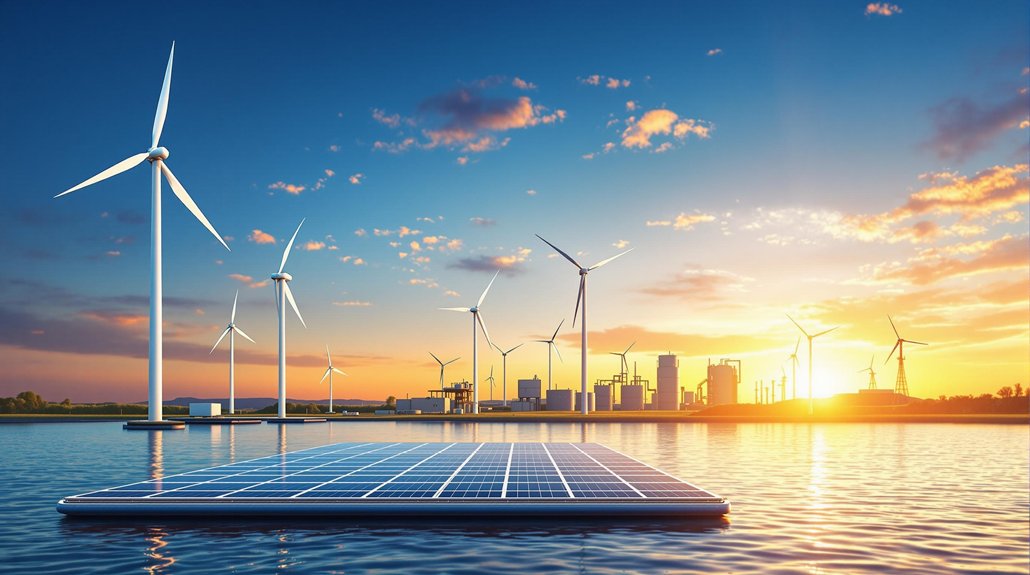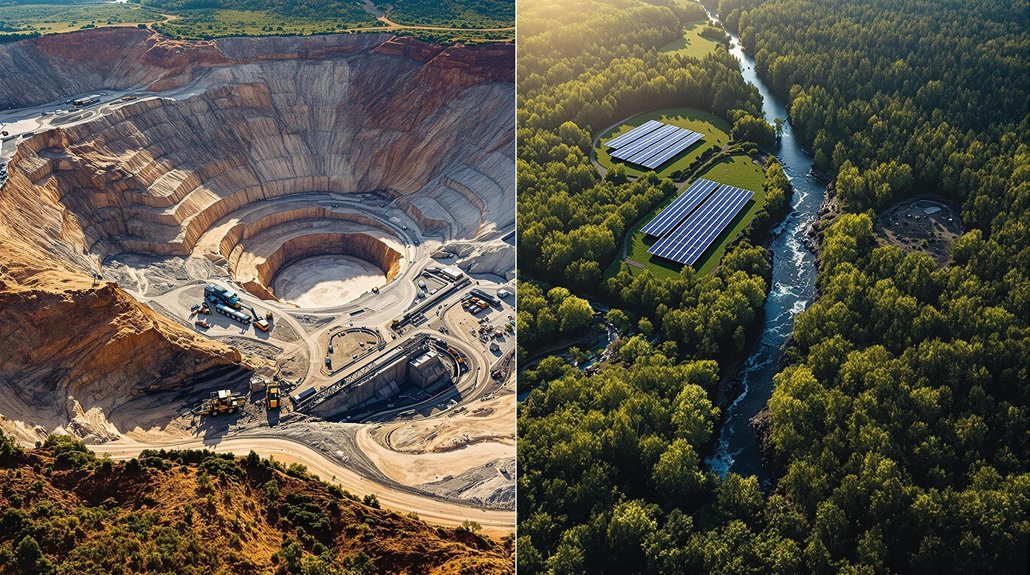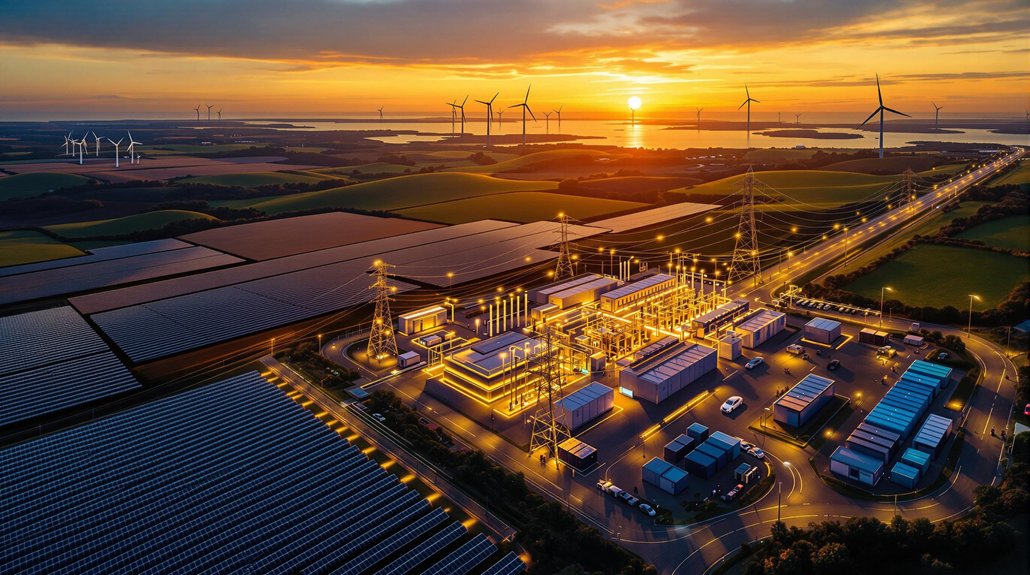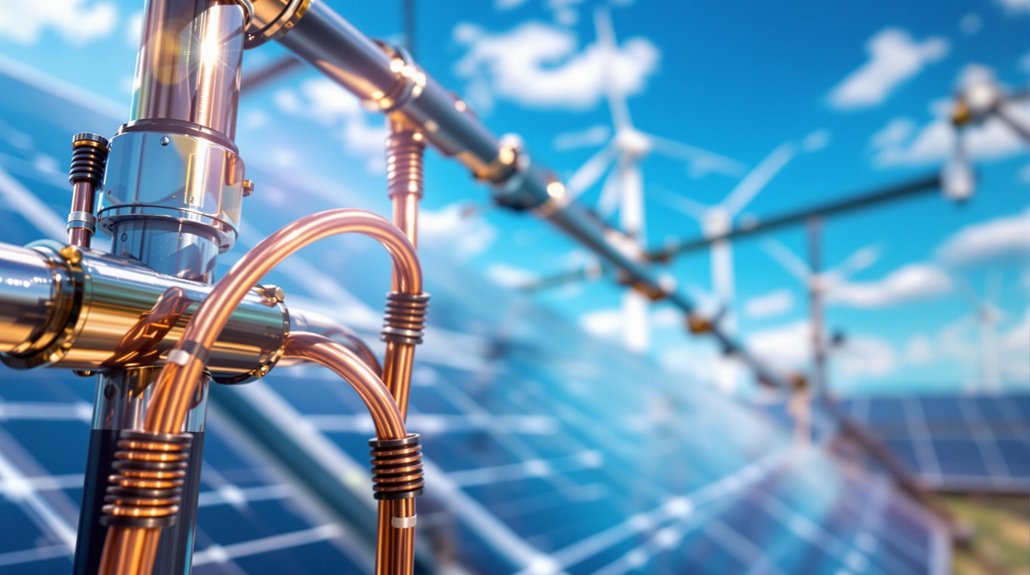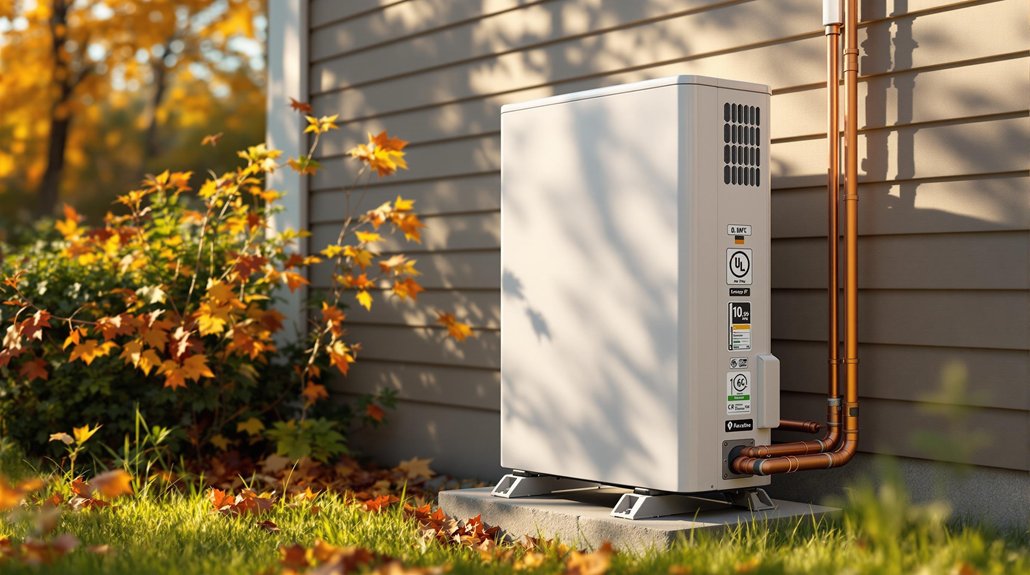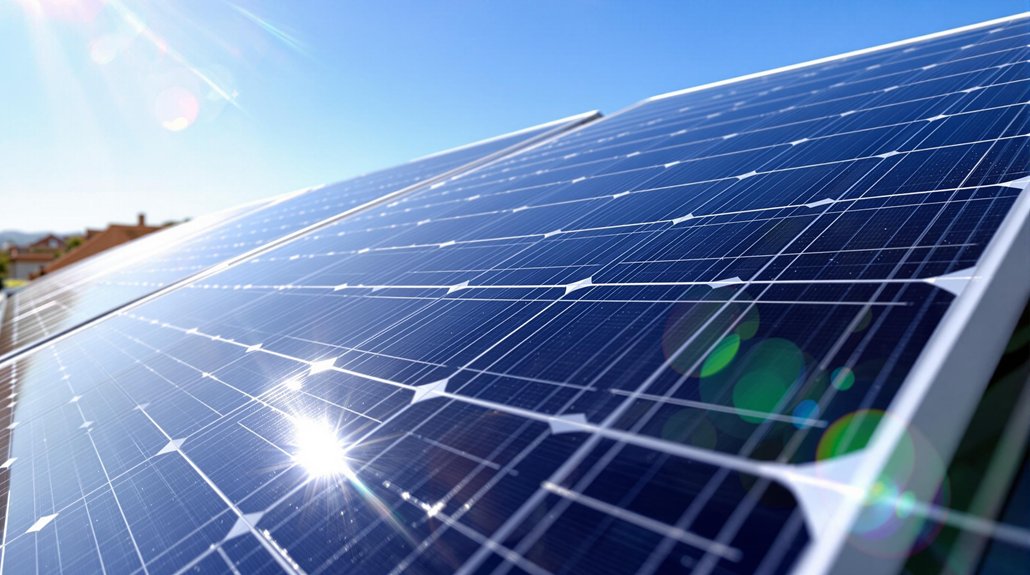Today’s clean energy solutions go far beyond traditional solar panels. Innovations include perovskite cells with 29% efficiency, bladeless wind turbines that protect birds, and gravity-based energy storage systems. Other advances feature floating solar farms, airborne wind systems, and hydrogen fuel cells operating at 60% efficiency. Smart grids with AI optimization connect these technologies while enabling peer-to-peer energy trading. These developments represent the cutting edge of renewable energy transformation.
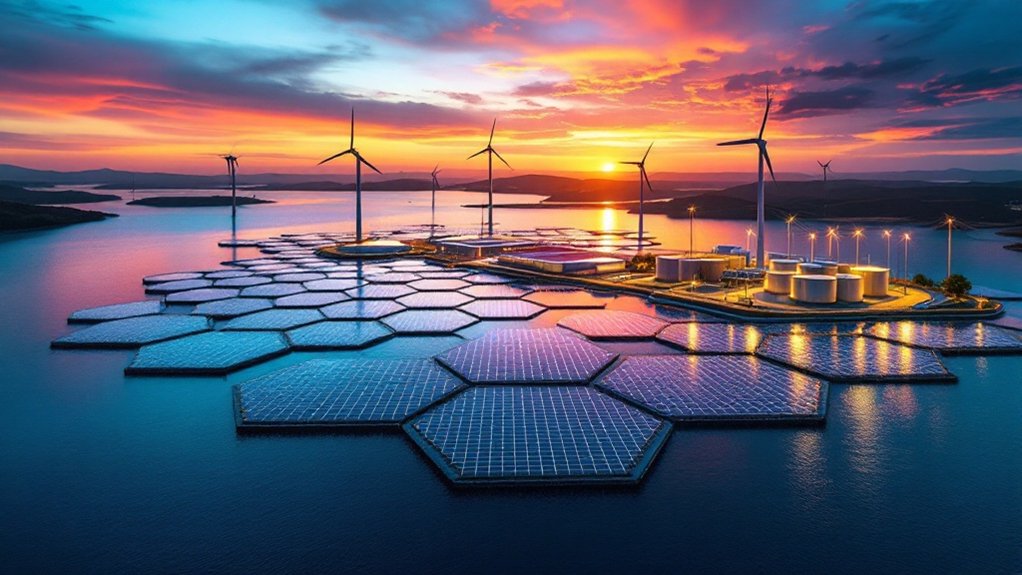
Countless innovative solutions for clean energy are transforming how the world generates and stores power. Recent advances in solar energy include perovskite solar cells that reach over 29% efficiency and transparent panels that can be used on windows. Engineers have also developed solar paint that captures energy from both sunlight and moisture.
Floating solar farms make use of water surfaces, while bifacial panels increase energy production by 30% by collecting sunlight from both sides.
Innovative water-based solar installations and dual-sided panels are revolutionizing how we maximize clean energy collection from our environment.
Wind energy has evolved with bladeless turbines that reduce noise and bird deaths. Airborne systems can reach higher altitudes where winds are stronger. Offshore floating wind farms expand potential locations beyond shallow coastal areas.
Vertical axis turbines work well in urban settings, and smart wind farms use AI to maximize performance.
Energy storage solutions are keeping pace with generation technologies. Solid-state batteries offer 2-3 times the energy density of traditional ones. Flow batteries provide scalable storage for power grids, while thermal systems store energy in molten salt. The latest solid-state batteries developed in 2024 offer unprecedented safety advantages with virtually no risk of fire or explosion.
Other options include compressed air stored in underground caverns and gravity-based systems that use weights.
Hydrogen technology offers versatile clean energy applications. Green hydrogen is produced using renewable electricity. Fuel cells in vehicles achieve 60% efficiency, and hydrogen can be blended into existing natural gas pipelines.
It can be stored underground in salt caverns or transported as ammonia.
Ocean energy harnesses the power of tides, waves, and temperature differences. Tidal generators create electricity from predictable flows, while wave converters capture surface motion. Underwater kite systems generate power from ocean currents.
Bioenergy innovations include algae-based fuels that yield ten times more energy than crops. Waste materials can produce biogas through anaerobic digestion.
Smart grid technologies tie these systems together with advanced metering, distributed resources, and self-healing capabilities. Some grids even use blockchain for peer-to-peer energy trading, allowing consumers to buy and sell electricity directly. The ongoing technological advancements in renewable energy are critical for meeting global climate targets while satisfying increasing energy demands. Artificial intelligence systems are increasingly vital for optimizing energy forecasting and improving grid management efficiency across renewable sources.
Frequently Asked Questions
How Is Cool Effect Funded?
Cool Effect is funded through multiple revenue streams. The organization collects a 9.87% fee on all carbon offset purchases.
They accept donations via credit cards, PayPal, checks, and wire transfers. Their funding model includes one-time and subscription-based carbon offset options ranging from $10.87 to $38.26 per metric ton of CO2e.
The nonprofit also maintains corporate partnerships with major companies like Salesforce, Twitter, and American Airlines.
What Metrics Measure the Success of Clean Energy Initiatives?
Success metrics for clean energy initiatives include environmental measures like CO2 emissions reduced and air quality improvement.
Economic indicators track ROI, job creation, and cost savings.
Energy production metrics monitor renewable capacity added and efficiency improvements.
Social impact is measured through public awareness, technology adoption rates, and energy poverty reduction.
These metrics help determine if clean energy projects are meeting their goals and benefiting communities.
Can Individuals Invest Directly in Clean Energy Projects?
Individuals can invest directly in clean energy projects through several channels.
Crowdfunding platforms like Citizenergy and Trine connect people with renewable energy opportunities. Investors can buy stocks in clean energy companies or purchase green bonds.
Community solar projects allow local participation. Personal investments include installing solar panels on homes or purchasing battery storage systems.
Government-backed programs in many countries also provide pathways for direct clean energy investments.
How Quickly Can These Solutions Be Implemented Globally?
Global clean energy implementation is accelerating but faces challenges.
Solar and wind installations have doubled recently, with renewables now at 30% of global electricity.
By 2030, renewables could reach 50% of electricity production, EVs could be 60% of new car sales, and heat pump installations could grow 30-fold.
Grid limitations, supply chain issues, permitting delays, and skilled labor shortages remain significant barriers to faster worldwide adoption.
What Regulatory Barriers Exist for Implementing These Technologies?
Numerous regulatory barriers slow clean energy technology implementation.
Environmental permitting requires time-consuming impact assessments. Local zoning laws often prohibit renewable installations, while height restrictions block wind turbines.
The power grid faces outdated infrastructure unable to handle variable renewables.
Policy barriers include fossil fuel subsidies creating an uneven playing field and lack of carbon pricing.
Inconsistent standards across jurisdictions further complicate development efforts.
